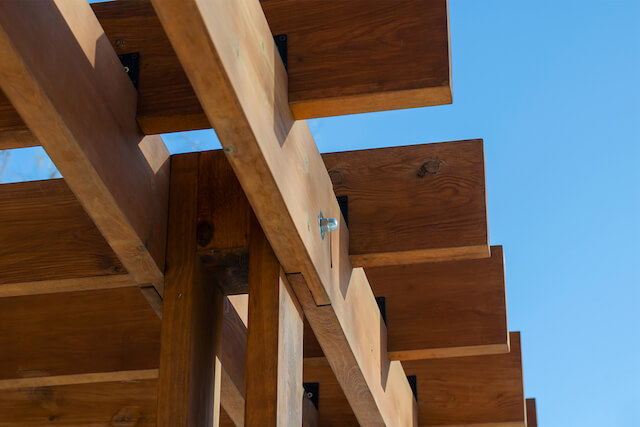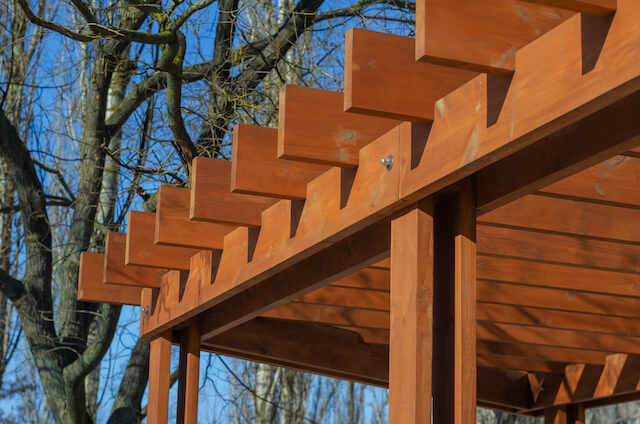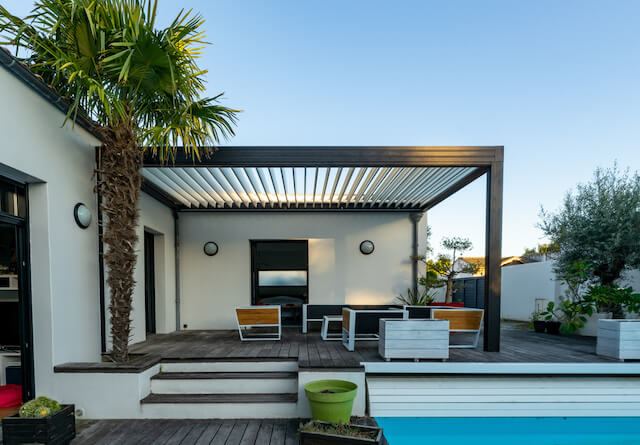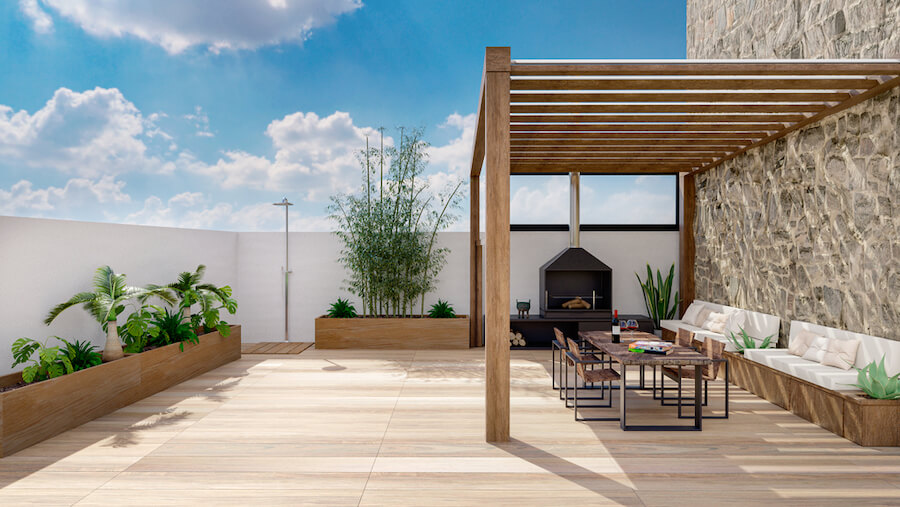Adding a pergola is the perfect way to turn the outdoor space on your property into a fun place for outdoor workouts, barbeques, reading books, and sipping your morning cup of coffee or tea.
Most homeowners prefer wooden pergolas, which are suitable for natural settings. But they won’t last under extreme conditions, requiring an alternative. So many people have considered using composite wood for their pergolas.
With that in mind, you might wonder, “Can you use composite wood for pergola?” We will help you clear this up. Let’s scroll down right now!
Table of Contents
Can You Use Composite Wood for Pergola?

Yes, you can use composite wood to replace timber or wood when referring to pergolas. Composite wood pergolas are even an excellent choice in many cases.
In addition to being used for pergolas, composite wood is a perfect substitute for natural wood to make countless other items, such as tables, doors, cabinets, gazebos, fences, and decks.
The fact is that very few other materials can match the benefits of composite wood, making it perfect for both residential and commercial applications.
Why Use Composite Wood for a Pergola?

There are many good reasons for using composite wood for a pergola. Let’s take a look at them:
The Perfect Natural Wood Alternative
The composite wood takes the fantastic look of natural wood and has excellent durability and strength. This creates a hard-wearing, long-lasting, and great-looking outdoor structure.
The composite components are more robust than natural wood and timber. It is also preferred for its long life and resistance to tough elements.
Many homeowners across the US now use this material rather than timber since it is simply a better alternative.
Eco-Friendly Solution
The composite wood is made from wood fiber, recycled plastic, and a joining compound.
This tough material has the beauty of natural wood and can be used in various applications in place of natural wood.
It is a good idea to use composite wood to replace timber for fences, pergolas, entrance archways, decking, wall cladding, and more.
Using this material will reduce the demand for natural wood and protect the environment.
Cheap Price
The cost of composite wood is often significantly lower than natural wood, making it ideal for those on a tight budget.
A Guide On How to DIY One Composite Wood Pergola
Want to DIY a composite wood pergola? Here is a step-by-step guide for you.
Step 1: Determine the Height of Your Pergola
Landscape architects typically recommend between 2.20m and 3m for the height of a pergola, a generous width, and maximum coverage of around one-third of the exterior surface (such as your yard).
Anything more than that will significantly reduce the area’s natural light.
Step 2: Gather All Essential Things
We recommend installing your pergola on an independent structure for the most solidity. You need decorative beams, composite planks, and anchors.
You will also need to purchase wood screws, posts, washers, and bolts.
Step 3: Fix a Pergola to the Ground
Plan for a “pole” every about 1.5 m, driven into the ground 1/4 of its length. For a 2.5 m high pergola, its poles should be 3.12 m long if buried in the ground.
Once you have solidified the support posts, it is time to install your support beam against the wall (if you build a pergola against it).
After that, put the crossbeams at half a meter intervals and fasten them with washers and lag bolts.
You can attach shade slats to the frame using wood screws. Then play with the spacing to fine-turn the brightness before screwing in the slats.
Step 4: Play With Colors and Decorations
To stay in the elegant tone, we recommend Brazilian ipe and Peruvian teak.
Those shades respect the natural spectrum, usually delivering a nice contrast with the greens of a garden.
For a Scandinavian look, choose darker tones like Charcoal and Ebony or a pale one like Red Cedar. It does not matter if your pergola is in full sun or not, as these colors typically resist fading.
Then, it is okay to add roses, vines, or other plants to your charming landscape.
FAQs
Why Do You Want a Pergola?

- Make a shaded area.
- Create a place to eat or prepare meals.
- Practice your hobbies.
- Add green to your garden.
- Add to your outdoor space.
What Are the Main Benefits of Composite Wood?
- Cheap.
- UV resistant.
- High quality.
- Natural look and is eco-friendly.
- Custom design and flexible application.
- Look like wood and is strong like aluminum.
- Require less maintenance, no painting, and does not stain
- Perfect for BBQ shade pergola, pool cabanas, car park structures, balcony features, and more.
What Are the Benefits of Wood Composite in Making a Pergola?
The wood composite pergola has the benefit of durability in terms of maintenance and resistance to sun or temperature variations.
What Kind of Wood Should I Use for a Pergola?
- Pressure Treated Wood: It is the budget pick for constructions with not high demands on appearance
- Tropical Hardwood: It is an expensive and beautiful alternative, but it seems hard to source FSC-certified wood.
- Red Cedar & Redwood: It is a pricey alternative and naturally protected wood.
- Modified Wood: It is the best option for optimal appearance, performance, and price.
Is Trex Pergola Good?
Yes. Trex Pergola will take outdoor living to the next level.
Can You Fit Pergola to Decking?
It is possible to install a pergola on a low elevated deck, provided it has stable supports.
Is Composite Wood Waterproof?
The answer is No. Only 100 percent synthetic materials can be entirely waterproof, but composite wood is created to be highly water-resistant.
Wrapping It Up
Can you use composite wood for pergola? Yes, composite wood is durable, cheap, and looks like natural wood. Using composite wood instead of natural wood is also considered environmental protection.
Was this article helpful to you? Let us know through the comments section. Also, check out the other post if you have queries about a pergola.
Thank you for taking the time to read the post!
Further Reading:

